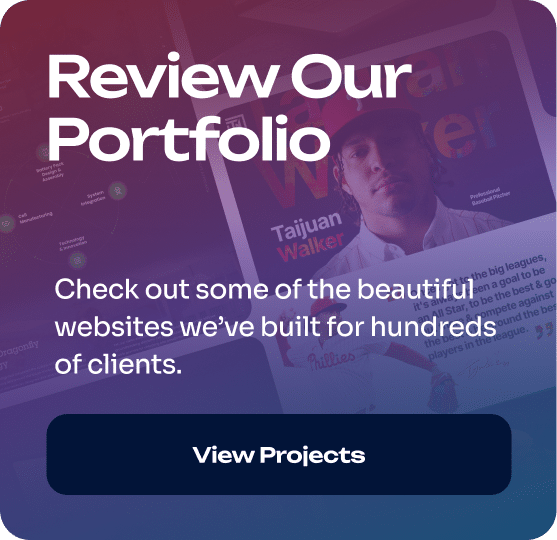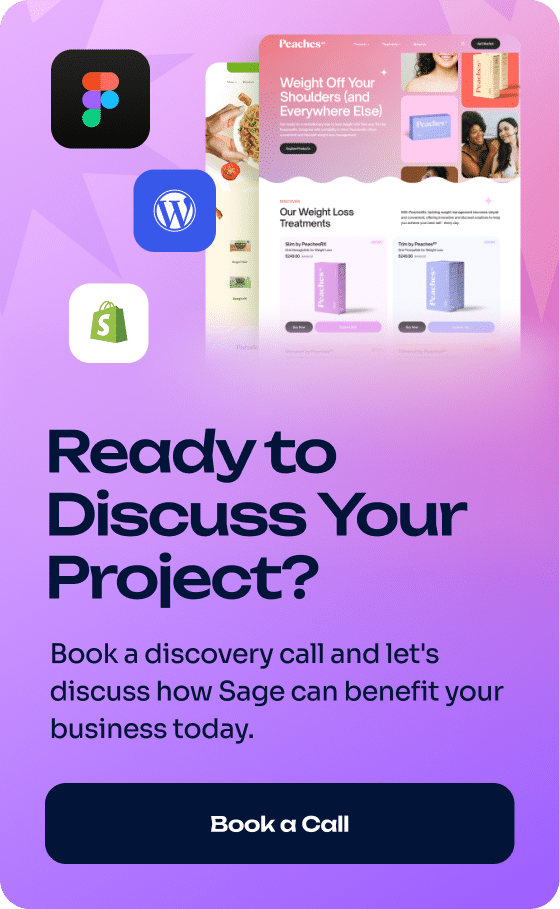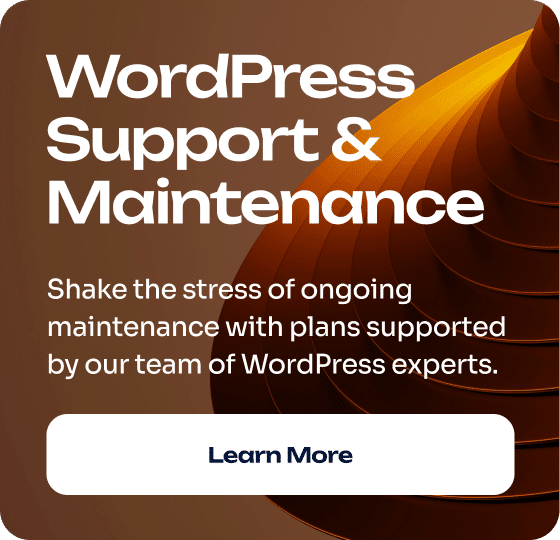Your current website looks like it was designed when flip phones were cutting-edge technology. The navigation confuses visitors, the mobile experience is painful, and your conversion rates reflect these problems. You know you need a complete website redesign, but hiring the wrong agency could cost you months of delays and budget overruns.
The solution starts with understanding whether you need a formal Request for Proposal (RFP) process and, if so, writing a comprehensive website RFP that attracts qualified agencies and eliminates the guesswork. A well-crafted website RFP sets clear expectations, streamlines vendor selection, and ensures you get proposals that address your actual needs rather than generic cookie-cutter responses.
Do You Actually Need a Website RFP?
Not every website project requires a formal RFP process. Understanding when to use this approach can save you significant time and help you choose the most effective path to finding the right web design partner.
When You Should Use a Website RFP
Large Budget Projects ($10,000+): If your project budget is $10,000 or above, an RFP helps ensure you’re getting competitive pricing and comprehensive proposals. At this investment level, the formal comparison process becomes valuable for justifying decisions to stakeholders.
Corporate or Government Websites: RFPs are particularly suited for corporate environments where formal procurement processes are required. Government organizations often mandate competitive bidding through RFPs for transparency and compliance reasons.
Complex Project Requirements: When your project involves multiple integrations, custom functionality, or technical specifications that need detailed explanation, an RFP provides the structured format necessary to communicate these requirements clearly.
Multiple Stakeholder Decision-Making: If several departments or executives need to approve the vendor selection, an RFP creates a standardized comparison framework that makes group decision-making more efficient.
When You Don’t Need a Website RFP
Smaller Budget Projects (Under $10,000): For projects under $10,000, a simple conversation with potential vendors often provides better results than a formal RFP process. Most quality agencies can understand your needs and provide accurate proposals through direct communication.
Relaxed Company Culture: If your organization values flexibility and quick decision-making over formal processes, initiating contact through a design firm’s website and having a phone conversation might be more aligned with your culture.
Urgent Timeline Requirements: When you need to move quickly, the RFP process can add unnecessary delays. Direct vendor conversations often lead to faster project initiation.
Preferred Vendor Relationships: If you have a trusted agency relationship or strong referral, bypassing the RFP process in favor of direct negotiation often produces better results.
Alternative Approaches to Website RFPs
For many small to medium-size businesses, simply filling out the contact form on a website design company’s page and initiating a telephone call is sufficient. During this phone call, design firms can typically assess your needs and send you a tailored proposal based on the goals and requirements identified in your conversation.
Important Note: The best indicator of a firm’s quality is their portfolio. Beware of great proposals from firms with mediocre portfolios. At the end of the day, you’re looking for a great website, and if the websites previously delivered by a firm aren’t impressive, yours likely won’t be either.
Understanding the Website RFP Process
An RFP for website design or redesign is a formal document that communicates your specific requirements and invites qualified agencies to propose tailored solutions. Think of it as a detailed job posting that goes far beyond “we need a new website.”
The process flows through five distinct phases:
- Problem Identification: Determine the core issues your website redesign needs to solve
- RFP Development: Draft a comprehensive document outlining requirements and expectations
- Vendor Selection: Distribute the RFP to 3-5 qualified agencies with relevant experience
- Proposal Evaluation: Compare submissions using predetermined criteria
- Partner Selection: Choose the agency that best fits your needs, timeline, and budget
The key difference between a generic RFP and a website-specific RFP lies in the technical specificity required. You’re not just buying a service; you’re commissioning a digital platform that needs to integrate with existing systems, meet accessibility standards, and support specific business functions.
Essential Components of a Website RFP
1. Company Background and Project Context
Start your RFP with a clear introduction that provides agencies with crucial context about your organization. This section should explain:
- Who you are: Company size, industry, and business model
- What you do: Core products or services and value propositions
- Target audience: Demographics, needs, and behaviors of your website visitors
- Business objectives: How the website supports your overall strategy
Include specific details about your current situation. If your existing website has a 70% mobile bounce rate or your checkout process has a 40% abandonment rate, these metrics help agencies understand the scope of improvements needed.
Sample Context Section: “Vista Grove Company is a 50-employee manufacturing firm specializing in sustainable building materials. Our current website, built in 2019, serves both B2B contractors and individual consumers. We’ve identified that 60% of our traffic comes from mobile devices, but our current site isn’t mobile-optimized, resulting in high bounce rates and lost leads.”
2. Website Audience Definition
Describe who will be using the website in detail. Usually, that means the group or groups of people you’d like to attract as new customers. This is critical information for website designers, developers, strategists, and copywriters — the type of audience will determine everything from functionality to UX and aesthetics.
If you have buyer personas, include them here! If not, you might want to consider creating buyer personas as part of the website redesign process.
3. Website Objectives and Goals
Identify the primary objective of your website and list any secondary or tertiary objectives in this section. A website with an objective to increase sales-ready leads will look and act very differently from a website with a primary objective of educating investors.
Examples of Primary Website Goals:
- Generate sales-ready leads for your sales team
- Sell products directly through e-commerce
- Educate and inform prospective customers
- Establish credibility for potential investors
- Support high-converting landing pages for PPC campaigns
- Provide information and be a go-to resource in your industry
You will probably have several goals for your website, but make sure to prioritize them. Pick one definite top-priority goal and add several secondary goals if applicable.
4. Current Website Assessment
Take an honest inventory of exactly what is not working with your current website. The more specific you are, the better. Simply saying that your current website isn’t working won’t be enough detail for your vendors — be specific about why it isn’t working!
Questions to Address:
- Do people not know where to find certain resources?
- Are you not getting enough traffic or conversions?
- Is it aesthetically acceptable, but no one at your company knows how to update content?
- Is it technically out-of-date and in need of a performance overhaul?
Examples of Specific Current Website Issues:
- “Users can’t find anything on the website because of the navigation. Menu options change based on which page you are on, which is confusing.”
- “Load times are too long, and the site isn’t mobile-friendly, so we are getting killed on SEO.”
- “Customers regularly tell us they get errors during checkout and must call us on the phone to complete their order.”
5. Detailed Project Scope and Technical Requirements
This section separates professional RFPs from amateur attempts. Be specific about:
Core Website Features:
- Number of pages and page types
- Content management system preferences
- E-commerce functionality requirements
- User account and login systems
- Search and filtering capabilities
Technical Specifications:
- Hosting requirements and preferences
- Performance benchmarks (page load times, etc.)
- Security requirements and compliance needs
- Third-party integrations (CRM, email marketing, analytics)
- Accessibility standards (WCAG compliance level)
Content Requirements:
- Who will provide the written content
- Photography and graphic design needs
- Video integration requirements
- Multilingual support needs
6. Core Functionality vs. Optional Features
This is the meat and potatoes of your RFP. List which functionalities are mandatory and which may be optional depending on cost, so that vendors will be able to line-item optional features. You can then make a more informed decision.
Examples:
- “It’s essential that we have an accurate and functional store locator that works across all devices. Optional feature: It would be nice to have an interactive map with a legend of custom icons.”
- “We need a blog on our website to share updates. Optional feature: We would love a full resource center with video library and advanced search functionality.”
7. E-commerce Details (If Applicable)
If your new website will have an e-commerce component, you should list details such as:
- Product/SKU quantity
- Near-term and long-term anticipated growth
- Payment processing requirements
- Inventory management needs
- Shipping and tax calculation requirements
8. Website Budget Parameters and Timeline Expectations
YES, you really should include your budget in your RFP! This will save you much time and effort on vendors that are way above your budget. It will also allow right-fit vendors to suggest ways to customize your functionality to make your goals work within a budget.
Provide a realistic budget range that reflects serious intent. You don’t need to reveal your exact budget, but agencies need to know whether you’re working with a $15,000 budget or a $150,000 budget to propose appropriate solutions.
Budget Considerations:
- Development and design costs
- Content creation expenses
- Third-party licensing fees
- Ongoing maintenance and hosting
- Training and support needs
Timeline Framework: Most comprehensive website redesigns take 12-16 weeks (or 18-26 weeks for complex projects) from contract signing to launch.
Factor in time for:
- Discovery and planning (2-3 weeks)
- Design and approval cycles (3-4 weeks)
- Development and testing (4-6 weeks)
- Content creation and migration (2-3 weeks)
- Launch and post-launch support (1-2 weeks)
Budget Examples:
- “We have a budget of $120,000 for a new website. We would love to complete the project with $100k and have $20k to invest in content marketing.”
- “We have a $95,000 budget for this website, and we must bill it before our fiscal year-end on October 1st.”
9. Proposal Requirements and Submission Guidelines
Specify exactly how you want proposals submitted:
- Format: PDF preferred for consistency
- Length: 8-12 pages typically provides adequate detail
- Deadline: Allow 2-3 weeks for quality responses
- Contact: Single point of contact for questions
Here, you should provide an outline of what responding vendors should include in their proposal responses. Every website design and development firm has a different process. Providing a clear outline will help standardize responses, which will help you compare proposals in the decision-making step.
10. Evaluation Criteria and Timeline
Define your evaluation criteria upfront and list them in order of importance:
- Relevant experience and portfolio quality
- Proposed approach and methodology
- Team qualifications and availability
- Budget alignment and value proposition
- Timeline feasibility and project management
Include the date you sent out the RFP, the deadline for proposal responses, and the date respondents can expect to hear back from you. Also include your kickoff and target website launch dates, making sure your dates are realistic.
How to Write an Effective Website RFP
Now that you understand the structure, here are the key principles for writing an RFP that stands out and generates quality responses:
- Establish Clear Goals for Your New Website
Do a little exercise before you start a wish list for your new site. First, what is the most important thing you want your website to do? You will probably have several goals for your website, but make sure to prioritize them.
- Be Honest About Your Current Website
Evaluate your existing site honestly and concisely. Be specific about the complaints your website regularly gets, and the things that you hope the new website will change.
- Ask the RIGHT Website Questions
As you write your RFP, you’ll probably come up with questions along the way about specific functionalities, platforms or tools. However, you don’t want to ask questions that will be limiting or that will lead your responders to believe you are tied to specific tools.
Make sure your questions are open-ended and ask for recommendations from the professionals who spend every day building websites.
Examples:
- Instead of asking, “How many portal sites do you recommend?” ask, “What approach would you take to handle speaking to multiple audiences?”
- Instead of asking, “What WordPress plugin would you use to stream a Twitter feed?” ask, “How would you recommend we bring social media elements into our website?”
- Keep It Simple
One of the best RFPs agencies receive are in simple outline form. What makes them great is the honesty with which they assess their current site, how they outline exactly what they want their new website to do, and how they know exactly who their audience is.
Eschew overly professional language for the cold, hard truth, and it will allow agencies to respond with incredibly specific proposals.
- Show Off Your Personality
This applies to ALL companies. Even if you’re a no-nonsense, B2B tax law firm, your business still has a personality. That personality may be trustworthy, credible, and reliable; it may be silly, punny, and irreverent; it may be authentic, generous, and passionate.
Whatever your personality, your web RFP should faithfully represent that. Your business’ personality will influence how your website looks, feels, and functions for your visitors.
Website RFP Template Structure
Here’s a proven template structure that can be completed efficiently:
Page 1: Project Overview
- Company background and context
- Project objectives and success criteria
- Budget range and timeline expectations
- Contact information and submission guidelines
Page 2: Technical Requirements
- Functional specifications and features
- Integration requirements
- Performance and compliance standards
- E-commerce details (if applicable)
Page 3: Scope and Deliverables
- Content and design requirements
- Development and testing needs
- Training and documentation expectations
- Core functionality vs. wish list items
Page 4: Evaluation and Next Steps
- Proposal format and length requirements
- Evaluation criteria and timeline
- RFP and project timeline details
- Questions and contact information
What Agencies Should Include in Their Proposals
Understanding what you should expect from agencies helps you evaluate proposals more effectively.
- Demonstrated Understanding of Your Business
Quality agencies don’t submit generic proposals. Look for:
- Specific references to your industry challenges
- Understanding of your target audience
- Recognition of your unique value propositions
- Relevant case studies and examples
- Detailed Project Approach and Methodology
Professional agencies should outline:
- Discovery Process: How they’ll learn about your needs
- Design Methodology: User research, wireframing, and testing approaches
- Development Process: Technical implementation and quality assurance
- Launch Strategy: Testing, migration, and go-live procedures
- Post-Launch Support: Maintenance, updates, and ongoing optimization
- Transparent Pricing and Resource Allocation
Strong proposals include:
- Detailed cost breakdowns by project phase
- Clear identification of what’s included vs. additional costs
- Resource allocation showing who works on what
- Payment schedule and terms
- Change request procedures and pricing
- Team Qualifications and Availability
Agencies should provide:
- Team member profiles and relevant experience
- Role definitions and responsibilities
- Time allocation for senior vs. junior resources
- Communication and project management approaches
Common Website RFP Mistakes to Avoid
- Dictating Rigid Formats and Processes
Avoid forcing agencies into overly rigid proposal formats. The way an agency naturally presents their approach tells you important information about their communication style and strategic thinking. Excessive formatting requirements can discourage quality agencies from participating.
- Providing Generic Information Instead of Specific Details
Don’t waste space explaining basic web development concepts that professional agencies already understand. Instead, focus on information that’s unique to your situation:
- Specific business challenges and goals
- Current website performance metrics
- Integration requirements and technical constraints
- Success criteria and measurement approaches
- Setting Unrealistic Timeline or Budget Expectations
Unrealistic expectations eliminate qualified agencies before they start. A comprehensive website redesign cannot be completed in four weeks regardless of budget. If you want your site live next month, chances are that 99% of companies will decline to respond due to an unrealistic time frame.
- Sending RFPs to Too Many Agencies
Limit your RFP distribution to 3-5 qualified agencies maximum. Too many submissions make evaluation difficult and reduce each agency’s likelihood of winning, which can result in less effort put into proposals.
- Using RFPs for Price Shopping
An RFP is a bad way to price shop. Responding to a website RFP is a time-consuming process for agencies. If you’re shopping for price, just call the agencies and ask them their general pricing for a website of approximate size and functionality.
Where to Send Your Website RFP
If you don’t already have a list of great website agencies you’d love to work with, here’s how to decide where to send your RFP:
Research Methods
Do a Google Search: Search for terms like “best website agency for [your industry].” Sponsored listings will give you insight into what agencies are actively seeking RFPs from companies like yours. Organic results will tell you who’s doing a great job at SEO.
Read the Reviews: Review sites like Clutch are a great place to learn from others’ experiences with top website agencies.
Do Your Homework: Make a list of websites you admire, ideally in your industry. Check the footer to see if it includes a statement about who designed and built the site. If not, reach out and ask (as long as they’re not a direct competitor).
Look for Technical Partners: If you have technical requirements (for example, you want to host your site on WP Engine or you need to integrate with HubSpot), search for agencies that have verified partnerships with those tech providers.
Pre-RFP Outreach
Conduct a Pre-Emptive Q&A: Before you send out the RFP, you should have a Q&A period with all the agencies you want to participate. During this Q&A period, explain why you’re sending your website RFP to their agency, and be clear about your expectations of the completed RFP.
Once you have some contenders, plan on sending your website RFP to 3-6 agencies maximum.
Evaluating Website Proposals
Creating a Structured Evaluation Process
Develop a consistent scoring system before receiving proposals:
- Create evaluation criteria with specific point values
- Use the same scorecard for every proposal
- Include multiple evaluators from different departments
- Document evaluation notes and concerns
Key Evaluation Criteria
When choosing from agencies that respond to your website RFP, consider these factors:
Presentation Quality: Did the agency come to sales and discovery calls prepared? How polished was their presentation? Were they on time, organized, and able to articulate what sets them apart?
Team Members: Were you able to meet with key team members who will be directly responsible for important parts of the website process? This might include a project manager, lead designer, developer, copywriter, and more.
Working Process: Did the agency describe the website design process in detail? Are you clear on things like how often you’ll meet, how you’ll communicate on a day-to-day basis, any project management tools they use?
References: Get them. Check them. Contact recent clients with similar projects.
Cultural Fit and Communication: Building or redesigning a website is no small task. You’re going to be in the trenches with these people. Trust your gut when it comes to intangible qualities like communication style, common values, and even sense of humor.
Key Red Flags in Agency Proposals
Watch for these warning signs:
- Generic Content: Proposals that could apply to any business
- Significantly Lower Pricing: Without clear explanation of how savings are achieved
- Template-Heavy Responses: Minimal customization for your specific needs
- Vague Timelines: Lack of specific milestones and deliverables
- Poor Communication: Unclear explanations or failure to address your requirements
Making the Final Selection Decision
After initial evaluation:
- Conduct Interviews: Meet with top 2-3 candidates
- Ask Specific Questions: Test their understanding of your requirements
- Check References: Contact recent clients with similar projects
- Evaluate Chemistry: Assess communication style and cultural fit
- Review Contracts: Ensure terms align with proposal commitments
Website RFP Timeline and Best Practices
Setting Up Your Internal Team for Success
Before sending out RFPs:
- Identify decision-makers and include them early
- Assign a single point of contact for agency communications
- Prepare content inventory and brand guidelines
- Organize existing technical documentation
Building Long-Term Agency Relationships
Use the RFP process to identify potential long-term partners, not just one-time vendors. Consider:
- Post-launch maintenance and support capabilities
- Ongoing marketing and optimization services
- Strategic thinking beyond just the immediate project
- Cultural fit and communication preferences
Timeline Best Practices
RFP Development: Allow 1-2 weeks to create a comprehensive RFP
Response Period: Give agencies 2-3 weeks to respond
Evaluation Process: Plan 1-2 weeks for proposal review and interviews
Decision Timeline: Notify all participants within 1 week of final decision
Project Kickoff: Allow 1-2 weeks between selection and project start
Website RFP Examples and Resources
When looking for inspiration, examine RFPs from organizations like the Internet Standards Organization, which demonstrate:
- Easy-to-follow table of contents
- Well-structured and written content
- Bold text for critical information
- Clear submission guidelines
- Realistic timelines and budgets
Key Takeaways for Website RFP Success
- Evaluate whether you need an RFP: Projects under $10,000 or with relaxed timelines might benefit from direct agency conversations
- Include your budget: Transparency saves time for everyone and allows for better customized solutions
- Be specific about requirements: Focus on your unique needs rather than generic web development information
- Set realistic expectations: Quality website projects require adequate time and resources (12-26 weeks typically)
- Show your personality: Let agencies understand your company culture and communication style
- Create structured evaluation criteria: Use consistent scoring and include multiple stakeholders
- Focus on partnership potential: Look beyond the immediate project to long-term value
- Limit RFP distribution: 3-5 qualified agencies provide optimal balance of options and effort
- Ask the right questions: Open questions that seek recommendations rather than limiting responses
Conclusion
A well-crafted website RFP serves as the foundation for successful web development projects. By understanding when to use the RFP process, including the right components, and avoiding common mistakes, you can attract qualified agencies and make informed decisions that lead to exceptional websites.
Remember that the RFP process is ultimately about finding the right partner for your digital transformation. Focus on agencies that demonstrate understanding of your business, present clear methodologies, and show potential for long-term collaboration. The investment in a thorough RFP process pays dividends through better vendor selection, clearer project expectations, and ultimately, a more successful website that serves your business objectives.
Whether you choose a formal RFP process or direct agency engagement, the key is matching your approach to your project’s complexity, timeline, and organizational needs. The right process, executed well, sets the stage for website projects that deliver real business value and create lasting digital assets for your organization.
Ready to get started? Use this guide as your roadmap to creating a website RFP that attracts the right agencies and sets your project up for success. Remember: the goal isn’t just to get a new website — it’s to find a partner who can help transform your digital presence and drive meaningful business results.





